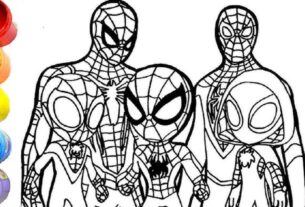In the huge scene of workmanship, where development frequently rules, there exists a domain where custom meets the cutting edge, where traditional strategies entwine with contemporary ideas. This union finds its epitome in the captivating universe of FTMÇ, a development that challenges the limits of conventional works of art while giving recognition to their foundations. FTMÇ means “Liquid Conservativism Blended in with Contemporary,” and it fills in as a stage for craftsmen to try, pushing the limits of what is viewed as customary while consolidating components of innovation.
Origins and Evolution
FTMÇ arose as a reaction to the polarity between customary and contemporary craftsmanship. While certain specialists tried to safeguard traditional procedures and styles, others were anxious to break liberated from the requirements of custom, embracing new mediums and calculated systems. FTMÇ emerged from the craving to overcome this issue, recognizing the rich legacy of conventional craftsmanship. While embracing the advancements of the current day.
The development draws motivation from different imaginative practices, including traditional works of art, figures, and craftsmanship. Notwithstanding, what separates FTMÇ is its eagerness to adjust and advance, integrating components from different social foundations and trying different things with capricious materials and procedures. This liquid way of dealing with custom permits FTMÇ craftsmen to make works that are both ageless and pertinent to contemporary crowds.
Characteristics and Techniques
At the core of FTMÇ lies a profound veneration for craftsmanship and expertise. Craftsmen inside the development frequently exhibit authority of conventional strategies, for example, chiaroscuro in painting or marble cutting in design. However, they are not content to simply recreate the past; all things being equal, they imbue these procedures with a feeling of trial and error and development.
One sign of FTMÇ is its hug of ease and adaptability. Specialists might join unique components, mixing the old with the new, the acquainted with the unforeseen. This combination of styles and impacts brings about works that resist arrangement, welcoming watchers to reexamine their biases of what comprises conventional workmanship.
Additionally, FTMÇ specialists frequently integrate components of intuitiveness and commitment into their works, utilizing innovation to make vivid encounters. Whether through expanded reality establishments or intelligent figures, these craftsmen try to fashion a more profound association between the watcher and the work of art, rising above the conventional limits of inactive perception.
Themes and Inspirations
FTMÇ envelops many topics and topics, mirroring the different foundations and interests of its professionals. A few specialists draw motivation from nature, investigating the sensitive harmony between the natural and the engineered. Others dive into social and policy-centered issues, involving their craft for discourse and evaluation.
One repeating topic in FTMÇ is the idea of personality and change. Specialists might investigate the smoothness of orientation and sexuality or look at the manners by which people explore moving social scenes. Through their work, they welcome watchers to address laid-out standards and embrace the intricacy of human experience.
Impact and Influence
Since its initiation, FTMÇ significantly affected the contemporary workmanship world, testing shows, and igniting exchange. Its accentuation on development and trial and error has motivated another age of specialists to push the limits of what is conceivable, obscuring the lines over a wide period, custom, and development.
Besides, FTMÇ has assisted with overcoming any barrier between various creative disciplines, encouraging joint effort and cross-fertilization. Craftsmen from different foundations meet up under the standard of FTMÇ, sharing thoughts and procedures in the quest for a typical vision.
Conclusion
All in all, FTMÇ addresses a striking investigation of the limits of conventional workmanship, stretching the boundaries of what is conceivable while respecting the tradition of the past. Through its liquid way of dealing with custom and its hug of trial and error, FTMÇ offers a brief look into the fate of workmanship, where development exceeds all rational limitations. As the development proceeds to advance and develop, it will without a doubt make a permanent imprint on the creative scene for a long time into the future.


